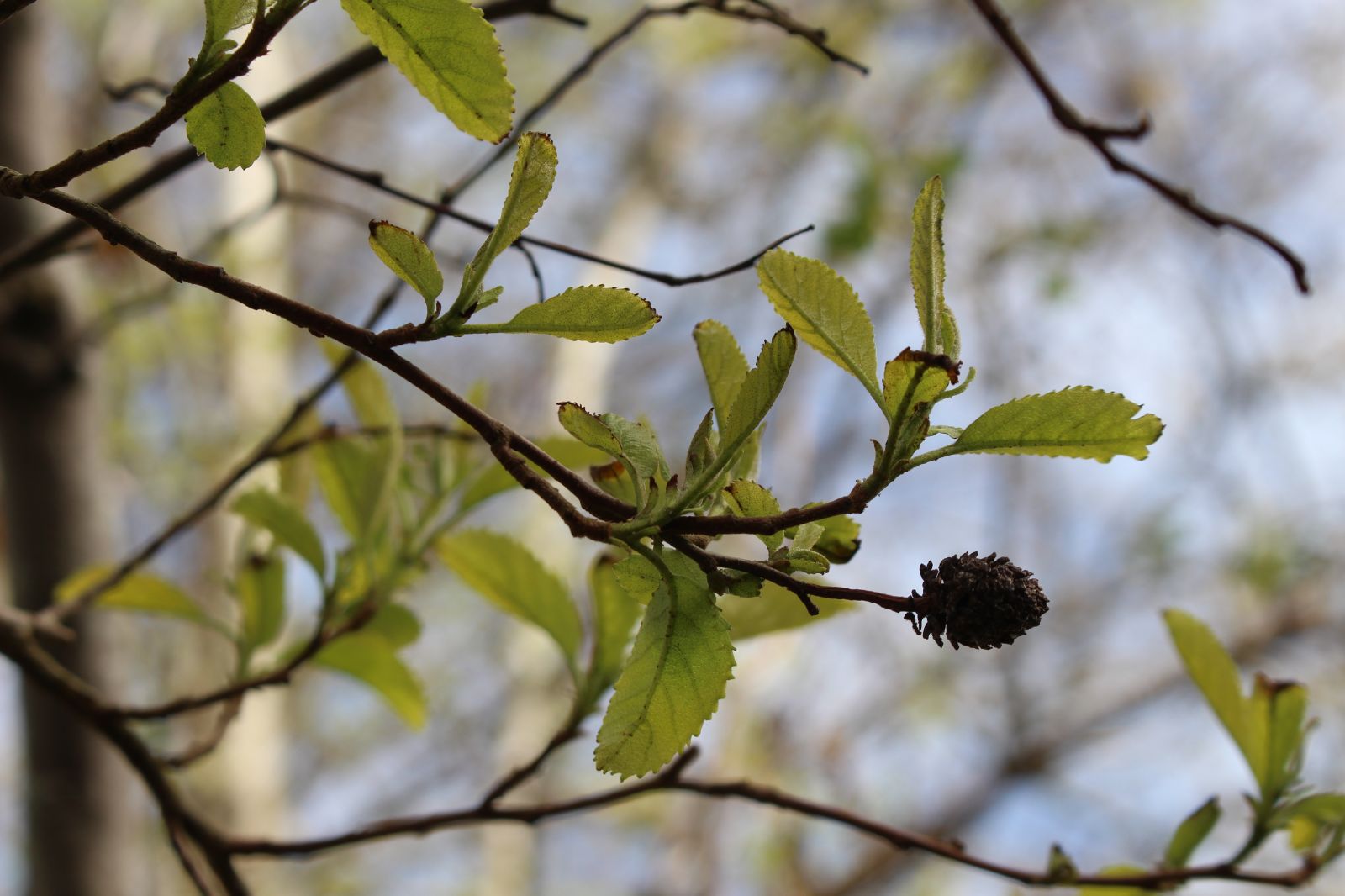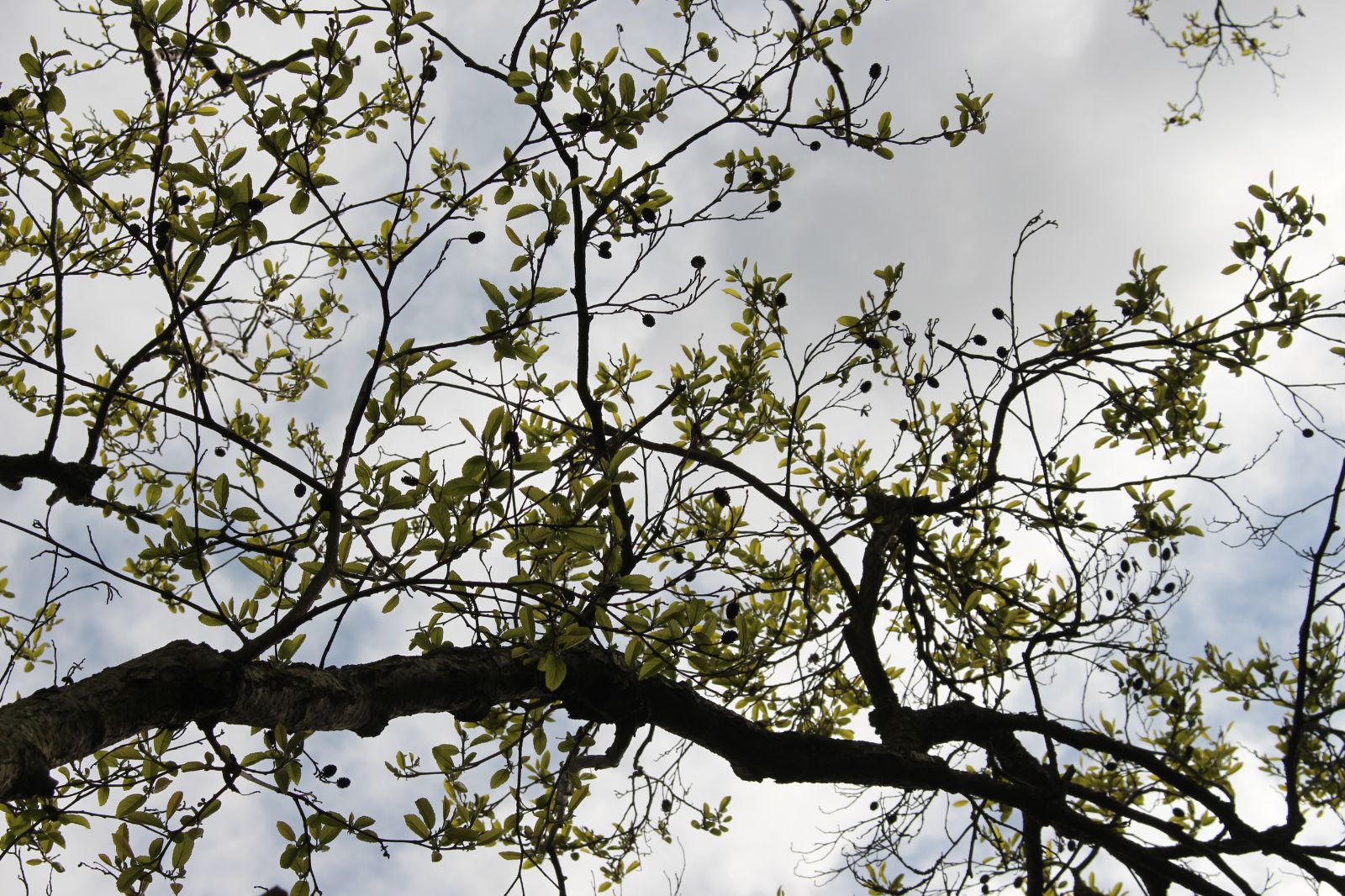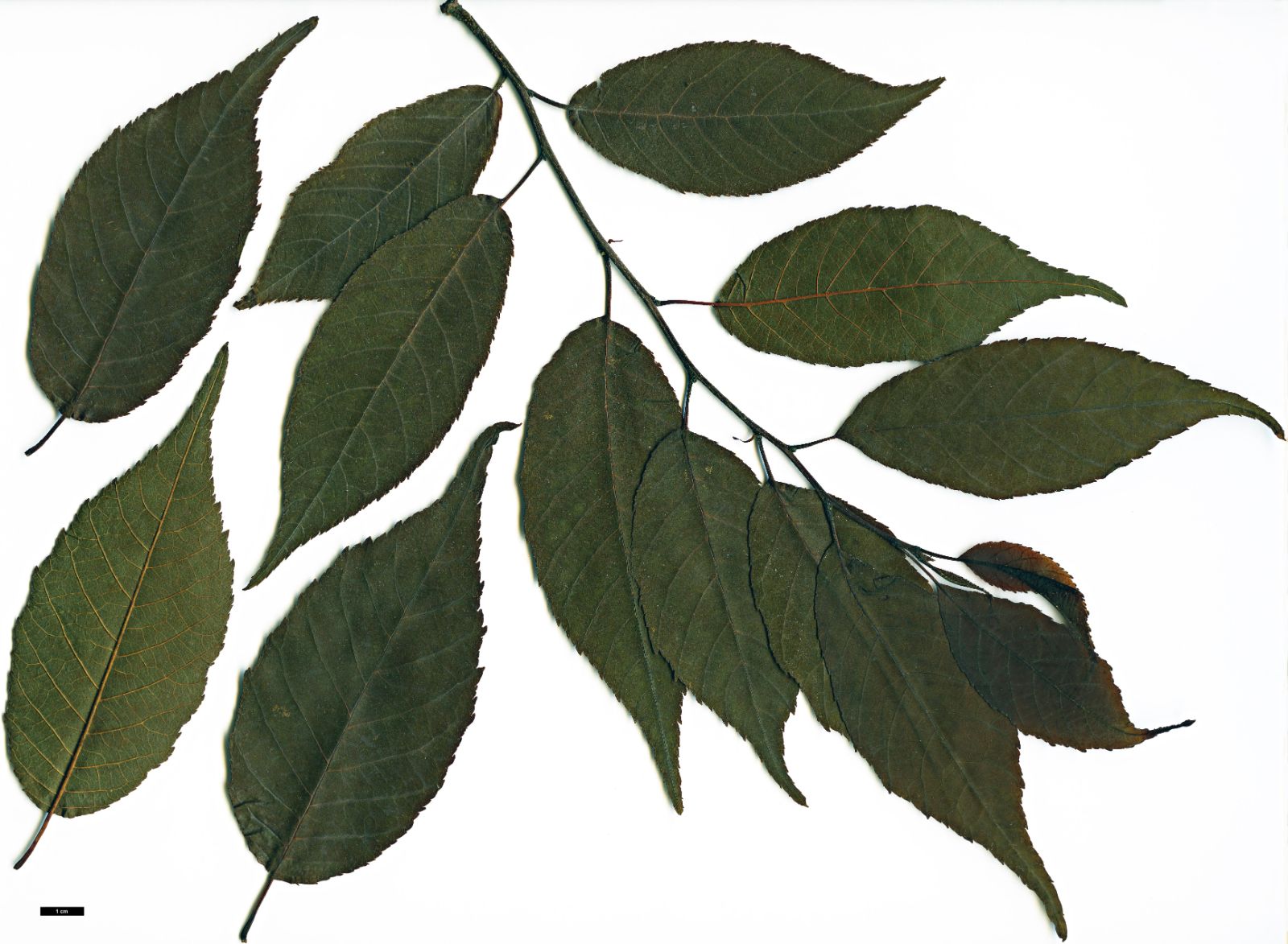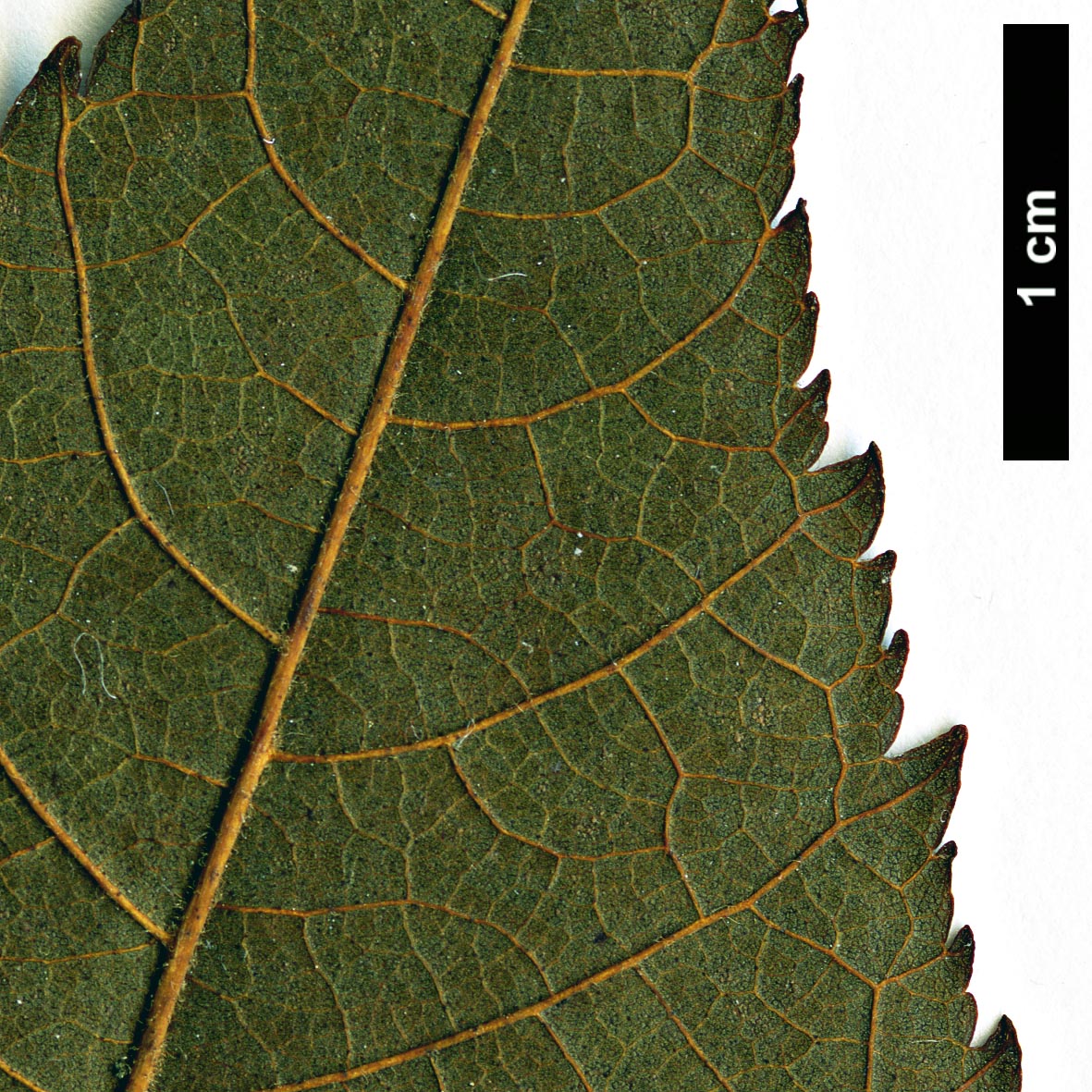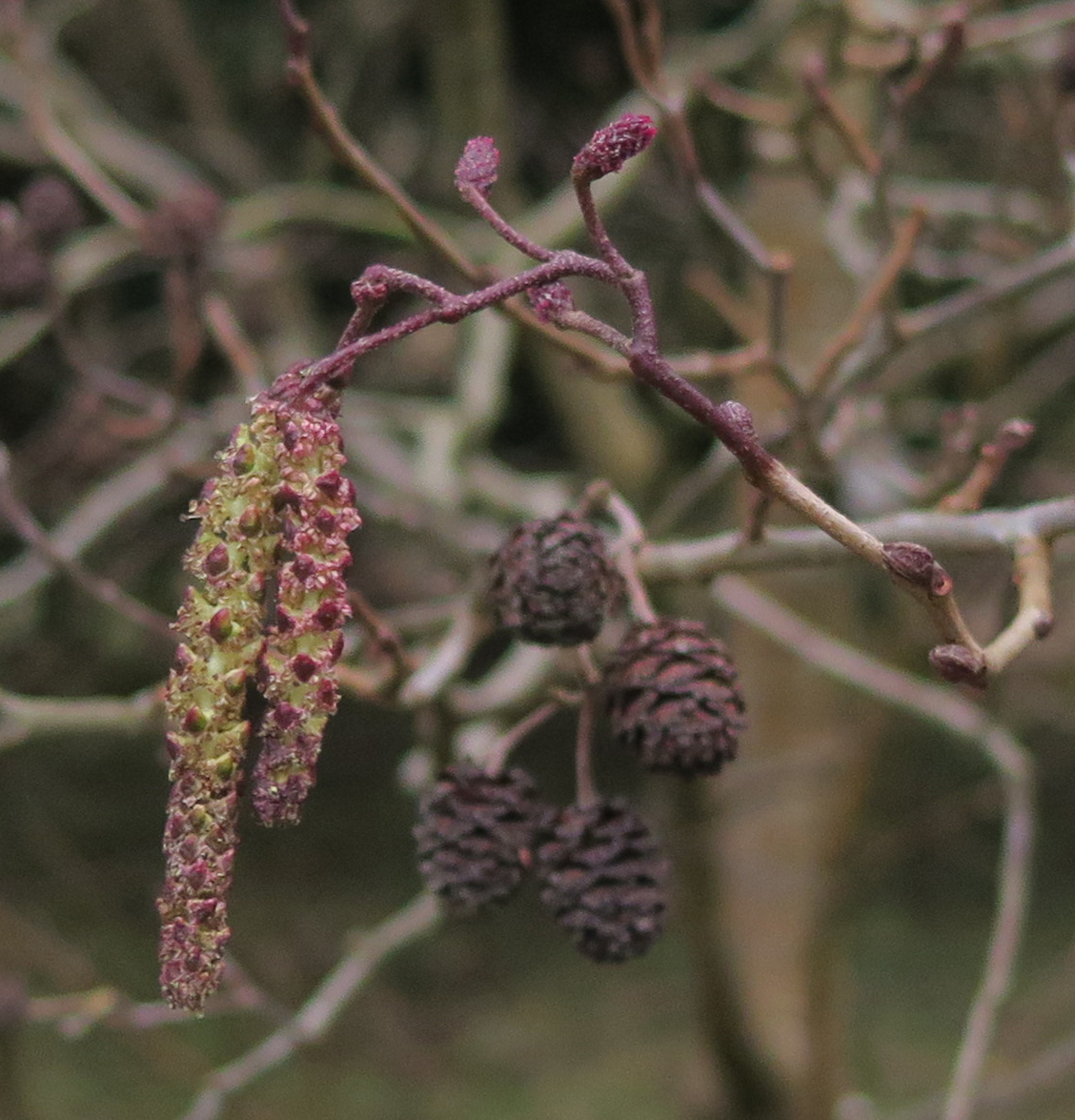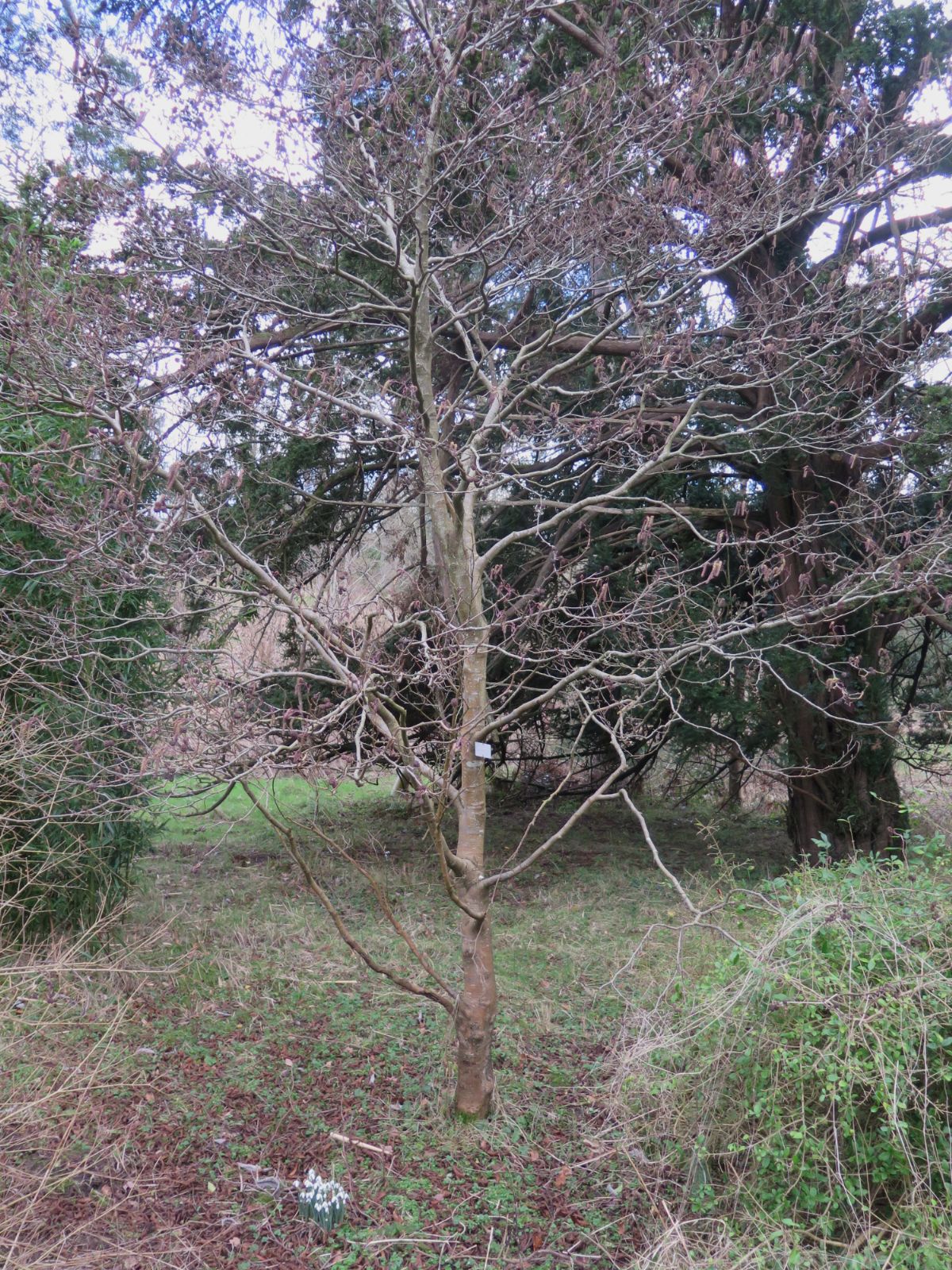Alnus trabeculosa
Sponsor
Kindly sponsored by
a member of the International Dendrology Society
Credits
Tim Baxter & Hugh A. McAllister (2024)
Recommended citation
Baxter, T. & McAllister, H.A. (2024), 'Alnus trabeculosa' from the website Trees and Shrubs Online (treesandshrubsonline.
Genus
- Alnus
- Subgen. Alnus, Sect. Japonicae
Common Names
- Sakuraba-han-no-ki
Synonyms
- Alnus jackii Hu
- Alnus nagurae Inokuma
Other taxa in genus
- Alnus acuminata
- Alnus alnobetula
- Alnus betulifolia
- Alnus cordata
- Alnus cremastogyne
- Alnus djavanshirii
- Alnus dolichocarpa
- Alnus × elliptica
- Alnus × fallacina
- Alnus fauriei
- Alnus ferdinandi-coburgii
- Alnus firma
- Alnus formosana
- Alnus glutinosa
- Alnus hirsuta
- Alnus incana
- Alnus inokumae
- Alnus japonica
- Alnus jorullensis
- Alnus lanata
- Alnus lusitanica
- Alnus maritima
- Alnus matsumurae
- Alnus × mayrii
- Alnus nepalensis
- Alnus nitida
- Alnus oblongifolia
- Alnus orientalis
- Alnus pendula
- Alnus rhombifolia
- Alnus rohlenae
- Alnus rubra
- Alnus serrulata
- Alnus serrulatoides
- Alnus sieboldiana
- Alnus 'Sipkes'
- Alnus × spaethii
- Alnus subcordata
Tree 5–10 m tall. Bark grey to grey-brown, smooth to fissured. Branchlets green glabrous or pillose, becoming grey-brown, terete. Buds 6–8 mm, obovate-elliptic to oblong, dark-brown with two ribbed glabrous scales, stipe 2 mm. Stipules deciduous early in season, elliptic-lanceolate. Leaves obovate-oblong to oblanceolate-oblong, 6–16 × 2.5–7 cm, apex acute, short acuminate to caudate, base, subcordate to broadly cuneate, glabrous, except sparsely hairy along veins and hairy domatia, craspedodromous with (8–)10–15 pairs of lateral veins, margin remotely minutely serrate with mucronate teeth, petiole 5–20 mm, glabrous to adaxially sparsely pilose. Staminate inflorescences catkin-like in terminal erect cluster of 3–5, in bud 25–40 × 5 mm, oblong, at anthesis 30–60 mm long, pendent. Pistillate inflorescences in erect racemes of two to five below males, oblong, glabrous, peduncle 10–20 mm. Fruit ovate-elliptic 10–25 × 10–15 mm, base cordate, apex obtuse, bracts 5–10 mm, five even lobes. Seed broadly ovate-elliptic, angular, 3–4 × 2–2.5 mm, with narrow papery wings ≤1 mm. Flowering May to June, fruiting July to August (China). Probably tetraploid, 2n=56. (Li & Skvortsov 1999; De Langhe 2018, T. Baxter pers. obs.).
Distribution China eastern coastal regions Japan S&C Honshu
Habitat Open swampy places, riverbanks, grassy swamps, in lowlands and hills (Japan) to edges of forests in mountain valleys, 200–1000 m asl.
USDA Hardiness Zone 7-8
RHS Hardiness Rating H5
Conservation status Least concern (LC)
Alnus trabeculosa is a common and widespread species in wet swampy places along the coastal plain of eastern China and in lowland areas of Japan. It remains a small tree in the wild in Japan to 5 m (Ohwi 1965), or up to 10 m in China. In effect it appears much like a small A. japonica, which does occur in similar habitats. A. trabeculosa is believed to be tetraploid (2n=56) but this requires confirmation. Genetically the species is something of a mystery, with no consensus so far. One sequence shows it is related to A. nepalensis, A. cremastogyne, A. formosana or A. cordata (same sample used in Chen & Li 2004; Ren, Xiang & Chen 2010), while another sequence shows it most closely related to A. hirsuta. It is suggested this species is frequently misidentified and deserves more work to ascertain its true identity and taxonomic status.
Morphologically it is very similar to Alnus japonica but can be distinguished by its smaller size, leaves with typically 9–14 pairs of lateral veins, hairy domatia in vein axils, and leaf bases rarely broadly cuneate and often obtuse to cordate. A. × spaethii has much larger leaves, often more than 15 cm long, while A. × mayrii has twigs, petioles, and abaxial leaf surface pubescent, with cuneate leaf bases, reliably with glabrous to sparsely villous young twigs and adaxially glabrous leaves.
Alnus trabeculosa is rare in cultivation, possibly due to being inferior to A. japonica which grows into a larger, more stately tree, but it would make a useful addition in areas of wet marshy ground. It has little application as a utility tree except as a small nitrogen-fixing tree for site amelioration (Chen et al. 2016). It is unknown in cultivation in North America despite being introduced several times to the Arnold Arboretum, suggesting a continental climate is inappropriate. There are scattered trees in collections across Europe: for example, there is one at the National Botanical Garden of Belgium, Meise, originating from the Hangzhou Botanical Garden, accessioned in 1991. It also grows at the Botanischer Garten Berlin-Dahlem, and Freiburg-Günterstal Arboretum in Germany. In the UK it has been introduced successfully twice, with plants at Ness from Shanghai Botanic Garden, and a 1997 collection introduced by Ray Townsend and Mark Bridger from the Forest Tree Breeding Centre at Juo Town, Ibaraki Prefecture, Honshu, at 50 m asl. At Howick it has also been slow, one specimen there being less than 2 m tall when seen in 2005, but 5 m by 2019 (Tree Register 2022). The leaves are an attractive mid-green, and when young the midrib and principal veins are red.

